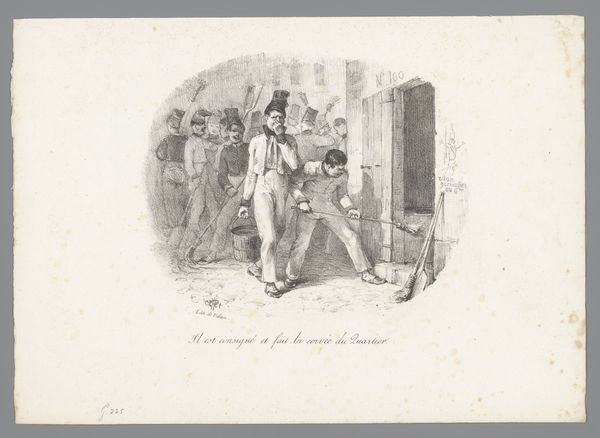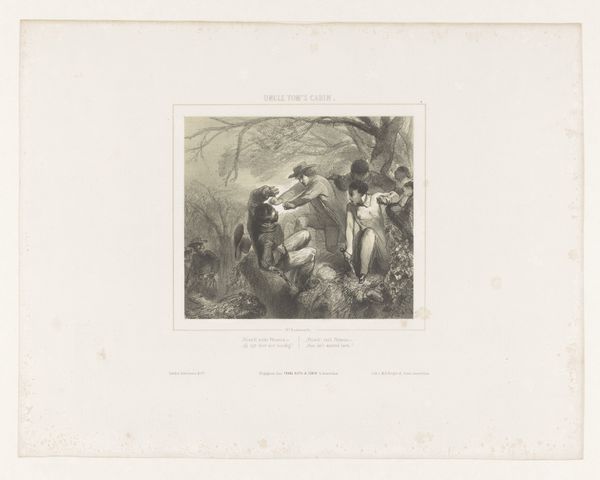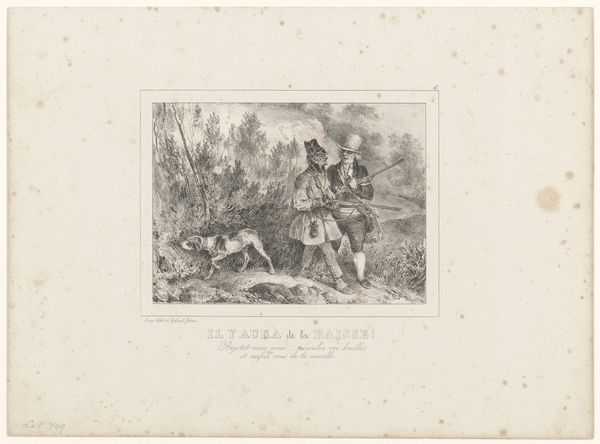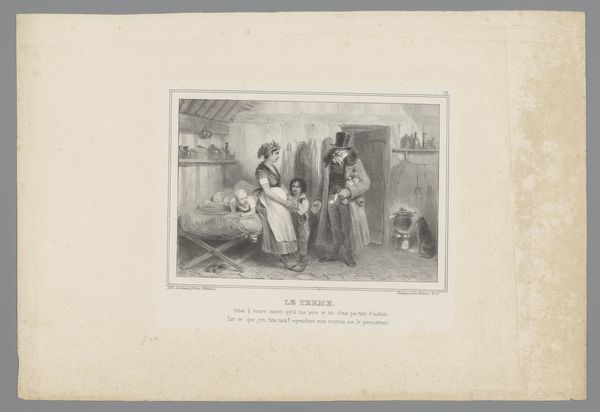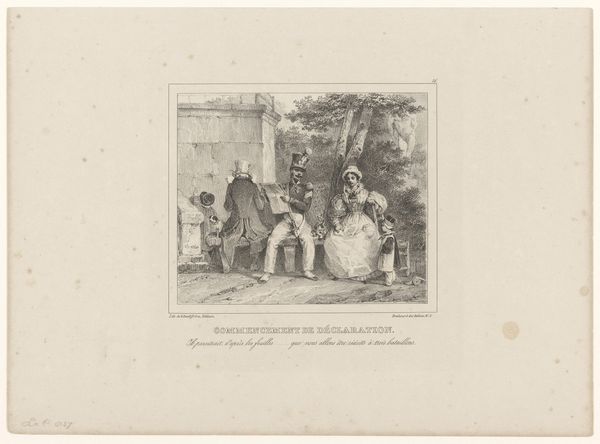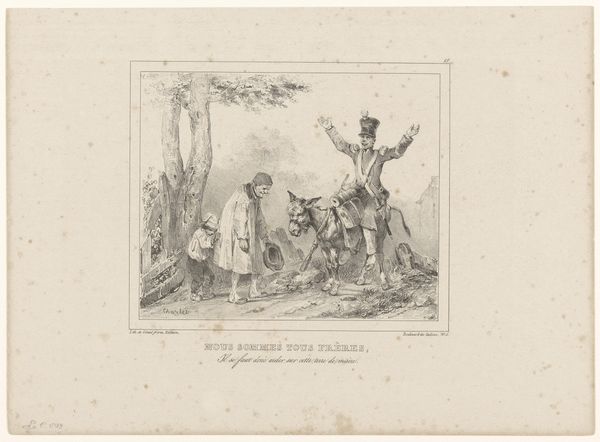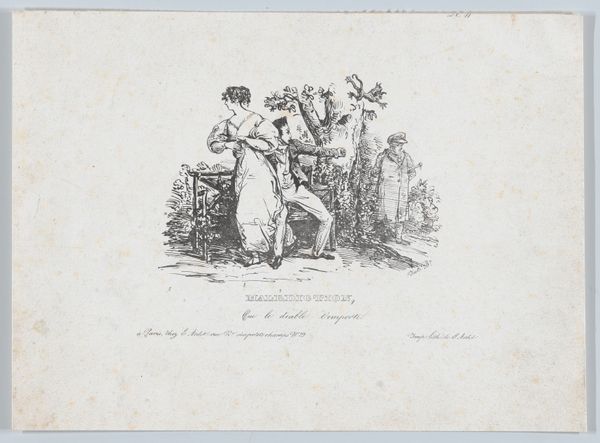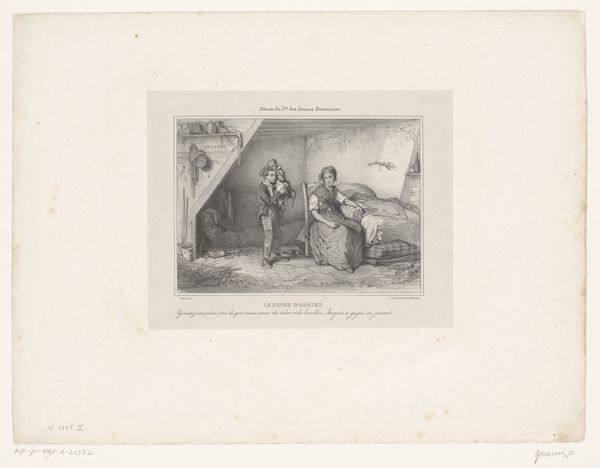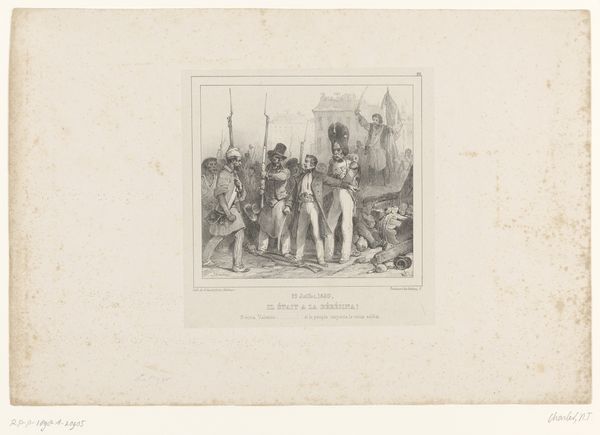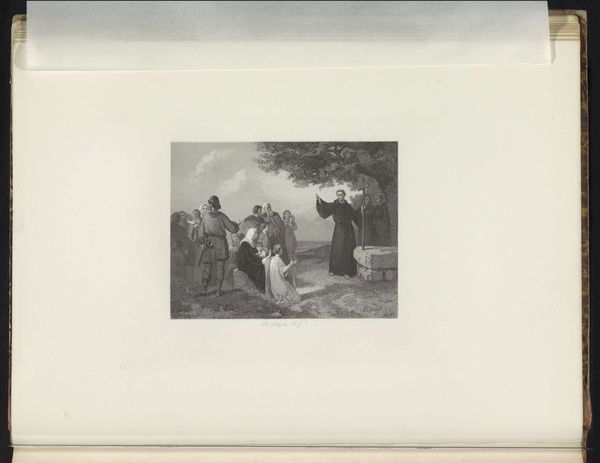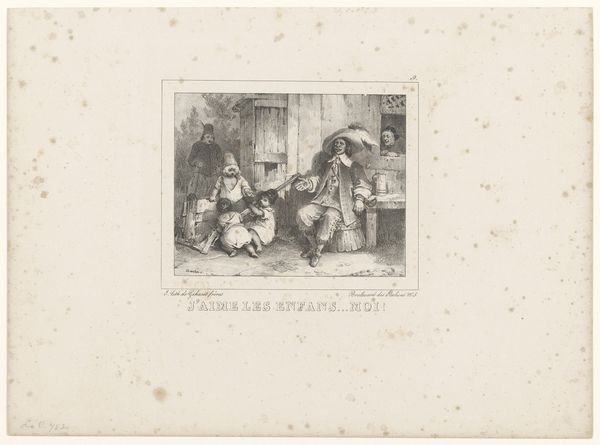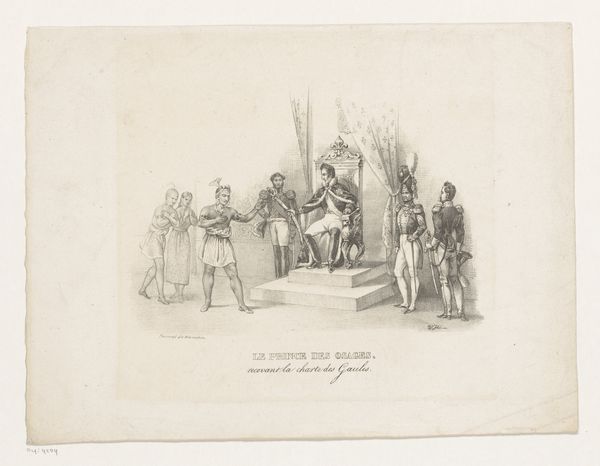
Links soldaat bij marktvrouw, rechts Jean-Jean met grote zak over zijn schouder 1825 - 1829
0:00
0:00
drawing, lithograph, print, ink
#
drawing
#
narrative-art
#
lithograph
# print
#
figuration
#
ink
#
romanticism
#
genre-painting
Dimensions: height 217 mm, width 323 mm
Copyright: Rijks Museum: Open Domain
Editor: This lithograph, "Links soldaat bij marktvrouw, rechts Jean-Jean met grote zak over zijn schouder" by Auguste Raffet, made between 1825 and 1829, captures a bustling market scene with soldiers. It feels very dynamic and full of characters. What do you see in this piece? Curator: I see a convergence of archetypes, particularly poignant considering the historical context. The market woman, a universal symbol of nurture and sustenance, juxtaposed with the soldier, an archetype of order but also potential disruption. The Romantic style, with its focus on emotion, amplifies this tension. Editor: Tension? Where do you see that? Curator: Notice how the soldier’s presence affects the scene. Are they buying, or are they imposing? Jean-Jean, with his large sack, almost cowers, seemingly burdened by the implications of this encounter. Even the title—referring to the soldier 'next to' the market woman rather than engaging with her—suggests separation and unease. Does that separation resonate with any cultural memory for you? Editor: Well, now that you mention it, it does speak to that time period, just after the Napoleonic wars. Maybe a visual reminder of occupying forces. Curator: Precisely! Raffet uses these recognizable symbols – soldier, market, burdened civilian – to subtly comment on power dynamics and their lasting impact on the collective psyche. It’s a potent image, isn’t it? Editor: It really is. I didn't pick up on the power dynamic before, but it makes the scene so much more complex. Curator: Indeed, and it shows how visual symbols, even in a seemingly simple genre scene, can reveal layers of meaning rooted in history and cultural memory.
Comments
No comments
Be the first to comment and join the conversation on the ultimate creative platform.
